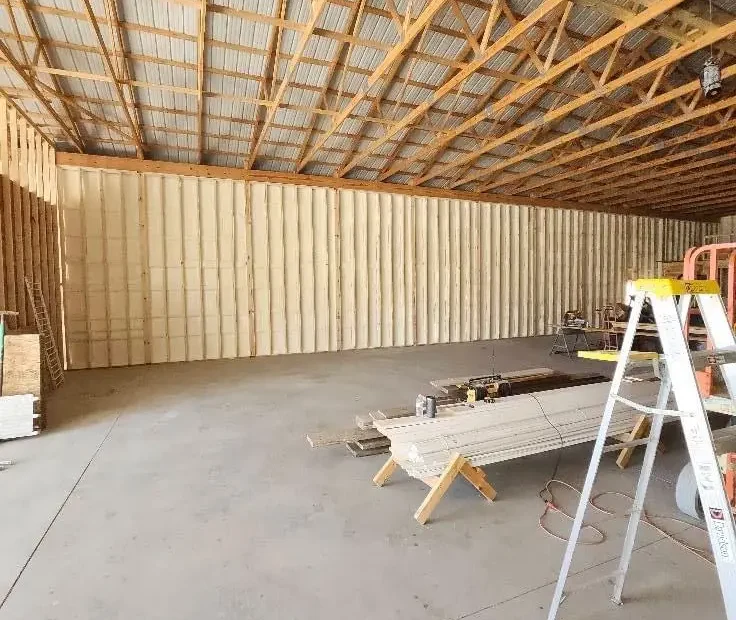Understanding the safety of closed cell spray foam for indoor use is crucial for both health and home improvement. This guide will walk you through key considerations to ensure a safe application.
Understanding Closed Cell Spray Foam
Closed cell spray foam is a type of insulation that features a rigid structure, providing exceptional thermal resistance. It consists of tiny cells that are closed off from one another, creating a barrier that prevents air and moisture infiltration. This makes it a popular choice among homeowners for both insulating and waterproofing their spaces.
One significant advantage of closed cell spray foam is its high R-value, which refers to its ability to resist heat transfer. This means that using it in your home can lead to substantial energy savings. It’s important to grasp how this insulation performs to appreciate its value fully.
Moreover, the strength and stability of closed cell spray foam contribute to its structural integrity, making it suitable for various applications, including roofs and basements. Understanding these properties helps you recognize why closed cell spray foam is often regarded as a superior choice in insulation.
Health Risks Associated with Closed Cell Spray Foam
While closed cell spray foam can be an excellent insulator, there are noteworthy health risks associated with its use indoors. Initial application involves chemicals like isocyanates, which can emit dangerous fumes. This concern necessitates thorough consideration before any installation.
Chemical exposure during application can pose health issues, including respiratory irritations and allergic reactions. Therefore, it’s imperative to understand the potential for these risks and to take all necessary safety precautions to mitigate them effectively.
Additionally, some installations might release volatile organic compounds (VOCs) after the spray foam has cured. These compounds can cause dizziness and headaches, particularly in poorly ventilated spaces. Thus, addressing these possible hazards is critical for safeguarding your indoor environment.
Safety Measures During Installation
To ensure the safety of both installers and occupants, several safety measures should be embraced during the application of closed cell spray foam. First, ensuring that all individuals present wear appropriate personal protective equipment (PPE) is essential. This includes masks, goggles, and gloves to prevent contact with any harmful substances.
Moreover, the installation area must be adequately ventilated before, during, and after application. Poor air circulation can trap harmful fumes, heightening health risks. By maximizing airflow and using fans, you can create a safer working environment.
It is also advisable to restrict access to the area being sprayed. Keeping bystanders or pets away minimizes the likelihood of exposure to harmful chemicals. By implementing comprehensive safety protocols, you can greatly enhance safety during the installation of closed cell spray foam.
Ventilation Importance After Installation
Post-application ventilation remains a crucial aspect of ensuring safety after closed cell spray foam is installed. Even after the curing process, some chemicals may linger and necessitate proper airflow to disperse any residual fumes. This step is vital to minimize potential health risks.
Establishing a consistent ventilation strategy can dramatically improve indoor air quality. It may involve opening windows, using exhaust fans, or employing air purification systems to clear any lingering VOCs. This will create a healthier living environment after having the foam applied.
Furthermore, allowing adequate time for the area to ventilate fully prior to reoccupying it is highly recommended. A waiting period of 24 to 48 hours can often allow sufficient time for any harmful chemicals to dissipate. Such a practice is essential for promoting long-term safety in your home.
Choosing Safe Products
Selecting the right closed cell spray foam product is paramount for ensuring safety. You should always look for foam products specifically labeled and tested for low VOC emissions. Such seals of approval ensure that the foam you use poses minimal risks to indoor air quality.
Moreover, check for certifications from organizations such as the Environmental Protection Agency (EPA) or the GreenGuard certification. These certifications demonstrate that the product meets stringent safety standards, thereby providing peace of mind during and after installation.
Finally, don’t hesitate to read customer reviews and consult professionals on the best brands available. Gathering feedback from previous users can offer insight on product effectiveness, safety features, and ease of application.
When to Consult Professionals
Turning to professional help is vital at various stages when considering closed cell spray foam installation. If you lack experience in handling insulation projects, engaging professionals ensures correct application methods are followed, including handling chemicals responsibly.
Additionally, professionals are adept at assessing the specific needs of your space, determining whether closed cell spray foam is the most suitable insulation option for your situation. Their expertise can guide you toward optimal energy efficiency while addressing any safety concerns introduced by the product.
Overall, trusting professionals not only streamlines the application process but also helps to ensure that long-term safety and effectiveness are at the forefront of your insulation project.
Final Thoughts on Safety and Use
While closed cell spray foam can provide effective insulation and moisture control, proper application and ventilation are vital for indoor safety. Always consult professionals and choose quality products.

